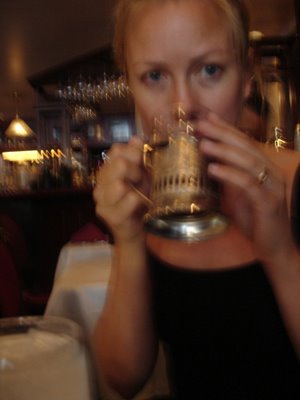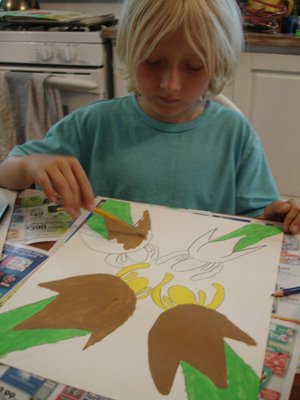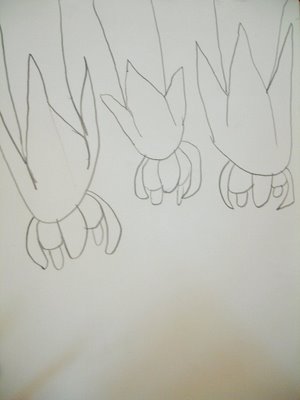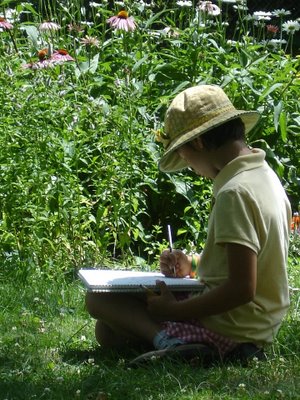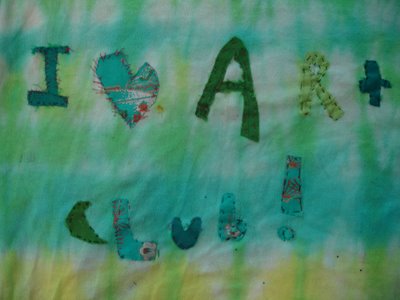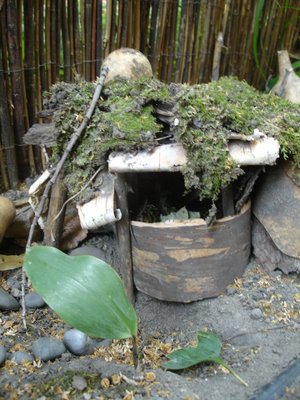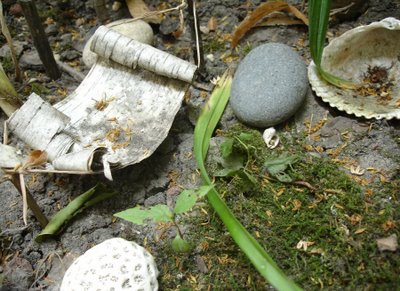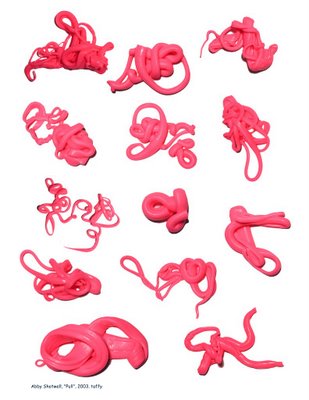
I will try to make a list of tips for parents interested in starting an art club. The ideas will probably grow and change, as I am learning about what works by trial and error, but here goes:
A.
Students in the group must be interested in art. Don't just work with a group of neighborhood kids or friends. Not all children want to make art for three hours after school one day of the week. Art Club is a time commitment and the students must choose it for themselves. Group dynamics are very important to the art club. I have had several students stop attending. Ask teachers and other parents which children they know who make art on their own time and seem inspired by art projects in school. I want kids who are already self motivated about visual art, but need a place and a group to share ideas with. Every community has kids who are hungry for this experience and it's important to try and reach out to gather these kids together. I assume that your child is one of these kids and will be the primary motivator for your continued interest in this project.
If you suspect that maybe you are more interested in art than your children, maybe you should consider forming an art club for adults.
I have two sons. My older son Henry is obviously interested in art. He is always making things and has been doing so forever. I started the group because I wanted him to have an art community of peers and I wanted to be a part of the group. My younger son Jimmy shows very little interest in making art. He may motivate me to try becoming a soccer coach in the future. The jury is still out. B.
Art Club should be free except for a materials fee. The kids who should be in art club don't always have material means or motivated parents. It depends on circumstance and I was not comfortable with narrowing my base by economics. Also, although I am a trained artist, I feel comfortable giving four hours of my time a week to a group of kids without thought of material gain. I think ideas of professionalism in the arts have made it all but impossible for kids to have access to a community of artists without a pay-per-lesson type mentality. I am not able to give more than one afternoon a week to a facilitating an art club, so that's all that I offer. Parents should ask themselves how much time they are willing to give of themselves and then schedule accordingly. An art club could easily sustain momentum by meeting once a month. If I did groups every day or needed to rent a space I would have to charge each student. That is why I feel it is important for art clubs to stay in the home, small, and parent-run.
I charge thirty dollars for materials for the year. I do a lot of shopping for materials at garage sales and thrift stores, and I put the word out for donations. Many art supply stores will give discounts to teachers, so ask about store policy. Parents who have economic means are able to donate money and materials if they choose. We have a Christmas sale of student art works to raise material funds.
C.
Teach the art club alone. I started the art club with a partner. While I think it is o.k. to start this way, and may give a certain amount of confidence to parents, in the long run I think that art club should be lead by one person. I ask parents to help on certain projects if they have a special project, talent, or desire, but I always enjoy the quiet time when I am the only adult in the room. I think anyone who is a teacher will attest to the dynamic disruption that occurs when another adult enters a classroom. I talk more with the other adults in the room when they are present instead of focusing on the needs of the students. At times other adults can cause me to feel self-conscious about my role as teacher. I think a good model for adult participation is as a guest teacher or field trip helper, and if another parent shows particular interest maybe they could attend for awhile and splinter off eventually to form their own art group.
D.
Have public exhibitions. I was thinking about the 4-H model of competition and realized that public display is an important group motivator. The art club students are not given prizes or ribbons, but the public display of art gives them a feeling of pride and something to strive for based on excellence and presentation. The art club has a booth in a Christmas craft fair and an annual exhibition at a local gallery with an official invitation, an opening, and specific fund raising goals. These experiences motivate art students. Public exhibitions give the group an opportunity to raise funds and create a community presence. Coffee shops are a great place to have an art opening.
E.
Teach skills. Teach self improvement. Recognize student preferences. I love art projects that are creative and exuberant, where students use bright colored paints and glue and sequins, but I also believe in the concentrated act of self improvement through art. Most art experiences for children are about the expressive moment, both in school and the library/museum type classes available within the community. I try to strike a balance between the fun, creative moment and an approach to art which emphasizes self improvement, the development of artistic skills, problem solving, and conversations about art and the role of artists in the community -- things which are especially suited to be taught within the extended time frame of the art club setting.
Each student will have a preference for specific media and an aversion to others. Some artists work best in two-dimensions, or sculpturally, or are colorists, or surface designers, some like to work gigantic, or perhaps in the miniature, and some like to just draw from their imaginations. These preferences will always be with each individual artist -- they are theirs to keep and cherish -- but I try to motivate students to expand their skills and think about art club as a place to learn new approaches to art, and to get feedback from other students and myself. I try to motivate each student according to their own interests, but I do not allow them to sit out group projects or just do their own thing. I treat art club like a class and everyone does the same projects, starts class together, and ends together with a sharing period where we have a chance to talk about the process and what is working in our projects and what we need to improve. Some students need to take more breaks because of their attention span, but we all come together at the end of a good day.
This year every student learned how to knit. Knitting is a skill and not all of the students were as thrilled about learning this skill as others, but we all worked to complete one project together. Some students completed twelve projects while others worked hard to get through one. I paced out the knitting so we had days where we only knit for the first half hour and then moved on to another project that engaged different artistic abilities. I also introduce students to drawing from life. Many days we start with a half hour of drawing from a live model (we take turns posing for each other) or I will set up a still life to observe. Drawing from life is hard. I do not feel exceptionally gifted at it myself, but it is a skill worth pursuing. I find students respond to the challenge, but most still favor drawing from the imagination.
Art club students will respond to artistic challenges because they feel comfortable with their group, and because they meet on a consistent basis, they know that they don't have to master anything on the first try. The club is about trying new things and being part of a supportive art community, so mastery and the completion of projects in a set amount of time is totally deemphasized. The art club students are self selected, after all, and identify themselves as artists, so it is only fair to treat them as serious art students and give them challenges, but this is different than artistic mastery or the definition of art as a project which demands perfection. I give the students gentle critiques of their work. They are looking for ways to improve their visual communication and I find many of them really want me to say what I believe is working in their art and what parts I think need improvement. Much of the art training kids receive absolutely lacks the element of critique. When I tell students, for example, that one part of their painting really interests me over the rest, they will often go back into their painting and come out renewed. I introduce the idea of editing in art club and we will talk about when a project is finished. The benefit of having a group dedicated to art is that you can introduce some of these ideas to students and even though we don't always know where the tough ideas will take us, the group dynamic and a weekly commitment allow the group to continue and strengthen. I will always motivate from a student's strengths, but I have found that each student is open to improving themselves artistically. Completing projects, learning new skills, having public exhibitions, and participating in show-and-share critiques are all ways of motivating art club students towards self-improvement, but this in no way negates the primary goal of art club -- that each student feels a sense of artistic community and learns to see art making as a continual process of experimentation.
I do think it is possible to have an art club where a leader specializes in one artistic medium or concentrates on areas where they (and their students) feel most comfortable and inspired. I love the idea of an art club dedicated to performance (there are certainly a number of kids in my art club who would love to focus entirely on making plays and designing the sets and costumes). Or perhaps a club that brings together a group of young musicians to form a band and explore the art of song writing and improvisation. I can visualize a quilting enthusiast who decides to create a youthful quilting bee. These variants would all work. I can visualize a time when there are a great variety of clubs and they all collaborate and attend performances and shows of the other groups on a regular basis.
I am personally trying to impart a specific philosophy of art to the students in my art club, but this can be intimidating and overwhelming for potential group leaders, especially if they don't have a personal philosophy of art already formed. Many of the principles and benefits of art club can be modified to the leader's interests. Starting a club is more important than having a philosophy of teaching, but I find it helpful to have a philosophy so I know where I am going. Also, I have a strong feeling about what is lacking in our society's approach to art education. I encourage parents starting a group to ask themselves some philosophical questions about their own motivations and let these feelings guide their teaching style. Most importantly, look to the child you are starting the art club for. In my case, I looked to my son Henry and asked myself what he would want and what he was missing in terms of his art education and that was able to guide me as I made decisions.F.
Teach same age kids. Fine motor skills and attention spans of children vary widely even within a year or two. I find it difficult to imagine teaching a group of kids of various ages. I am interested in the idea of mentoring. If other art clubs are started up, I think it would be wonderful to have older art students collaborate with younger students on specific projects, although I haven't been able to try this idea out yet.
G.
Give it a try. Teaching art to kids is a forgiving process. The bottom line is that not enough people try.
